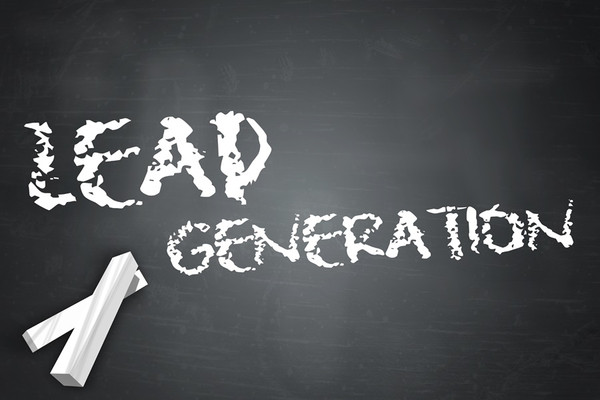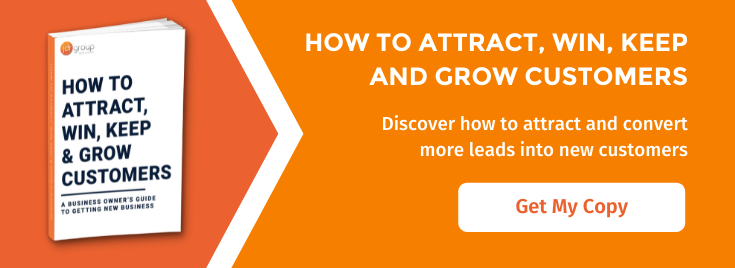Four Tips for Developing Effective Call to Action Buttons
by Will Williamson on 03-May-2024 15:34:47

Usually displayed in the form of short text and/or an image, the CTA is the section of your business website that calls people to take an action. The CTA button is the area on the page that serves as the ‘gateway’ between the buyer, reader or consumer and your product or service. When a user clicks on the CTA button, he is willingly advancing him or herself to the next step in the sales funnel. That remains true regardless of what you want the consumer to do (subscribe to a newsletter, participate in a webinar, purchase a product). Now, that answers the common question of ‘what is a call to action in marketing?’, but what makes for an effective CTA?
The entire CTA presentation is critical, but given the significance of the call to action button itself; marketers focus much of their energy on its appearance. If you want to learn how to get more leads you must first learn about CTA's. Take a look at these four areas successful marketers emphasise to make their CTA buttons more effective.
1. Colour Choice
Effective call to action buttons all have several things in common, including visual impact. The colour of the CTA button, for example, makes a difference in conversion rates, with red often outperforming other colours in A/B testing. Colour is not the only factor to consider, however. The button colour should stand in contrast to your background colours, and preferably, it should not be a colour that’s been used anywhere else on the page.
2. Whitespace
To aid with visual impact, place the CTA button against a whitespace, or on an area of the web page that is lighter in colour than the rest of the page. Of course, be careful not to place it too far away from the page content, because placement can negatively affect conversion rates, too.
3. Page Placement
The more prominent the location of the CTA button, the easier it will be for the consumer to find. So, location is instrumental to the success of a call-to-action button. The old rule of thumb about placing the CTA button above the fold is still a good idea, though it’s not nearly as important as it was a number of years ago. The development of responsive design and changing consumer browsing habits allow for more flexibility in button placement. However, there are still a few things to consider when learning how to get more leads using CTA's.
-
If the offer is complex, and the information presented to the reader causes the page to run long, add more than one CTA button along the reading path.
-
When the CTA button is below the fold, use directional cues to guide the reader.
-
Do not place the CTA button anywhere there is visual clutter.
4. Call to Action Phrases
The CTA button is prime territory, so there is no room to waste space on frivolous text. Let the consumer know exactly why they should click the button. For example, instead of “Submit” or “Click Here” , use “Start Your Free Trial” or “Download Your Free Ebook Now”.
Bonus tip: Position your Privacy Policy below the call to action button. Its presence can add credibility to your offer, even if most people never bother to read it.
Is it working?
Of course, ongoing follow-up is necessary to ensure that you have an effective call to action button. Analysing results will also let you know when it’s time to tweak your strategy. A common way to confirm the effectiveness of your call to action phrases and buttons is to use A/B testing. The results will offer insight into which presentation yields the best results and generates the most conversions. A/B testing is a powerful tool to help identify and create the most effective CTA buttons. In one example, A/B testing increased the CTR by 211%.
All online marketing strategies have an end game, which is to draw in leads and convert them into paying customers. Often, the approach will work well enough that consumers find their way to your business call to action page. However, if the CTA page is confusing, they’ll opt out of the experience, and your bounce rate will increase, instead of your conversion rate. Minimise the possibility of confusion by utilising these tips that are meant to draw your reader's eyes quickly to the CTA button and prompt them to take action.
To learn more about how to get more leads, please contact us.
- Inbound Marketing (SEO, PPC, Social Media, Video) (827)
- Strategy (366)
- Sales & CRM (195)
- Marketing Automation & Email Marketing (190)
- Business Growth (165)
- Website Design (160)
- Hubspot (138)
- Lead Generation (116)
- Google Adwords (99)
- Content Marketing (94)
- Conversion (51)
- Case Studies (47)
- News (47)
- Ecommerce (39)
- Webinars (34)
- SEO (25)
- AI (20)
- Events (19)
- LinkedIn Advertising (17)
- Video (17)
- Video Selling (15)
- Software training (13)
- Niche business marketing (11)
- The Digital Prosperity Podcast (10)
- Facebook Advertising (6)
- HubSpot Case Studies (5)
- January 2026 (1)
- December 2025 (15)
- November 2025 (6)
- October 2025 (17)
- September 2025 (16)
- August 2025 (14)
- July 2025 (14)
- June 2025 (5)
- May 2025 (19)
- April 2025 (15)
- March 2025 (13)
- February 2025 (13)
- January 2025 (8)
- December 2024 (2)
- November 2024 (4)
- October 2024 (21)
- September 2024 (4)
- August 2024 (8)
- July 2024 (14)
- June 2024 (16)
- May 2024 (25)
- April 2024 (15)
- March 2024 (18)
- February 2024 (5)
- January 2024 (10)
- December 2023 (6)
- November 2023 (10)
- October 2023 (13)
- September 2023 (12)
- August 2023 (14)
- July 2023 (13)
- June 2023 (14)
- May 2023 (15)
- April 2023 (13)
- March 2023 (14)
- February 2023 (13)
- January 2023 (15)
- December 2022 (13)
- November 2022 (6)
- October 2022 (8)
- September 2022 (22)
- August 2022 (15)
- July 2022 (13)
- June 2022 (16)
- May 2022 (14)
- April 2022 (16)
- March 2022 (17)
- February 2022 (11)
- January 2022 (8)
- December 2021 (6)
- November 2021 (7)
- October 2021 (11)
- September 2021 (10)
- August 2021 (7)
- July 2021 (7)
- June 2021 (4)
- May 2021 (4)
- April 2021 (1)
- March 2021 (3)
- February 2021 (5)
- January 2021 (4)
- December 2020 (7)
- November 2020 (6)
- October 2020 (5)
- September 2020 (9)
- August 2020 (18)
- July 2020 (17)
- June 2020 (17)
- May 2020 (10)
- April 2020 (21)
- March 2020 (24)
- February 2020 (21)
- January 2020 (12)
- December 2019 (23)
- November 2019 (12)
- October 2019 (14)
- September 2019 (16)
- August 2019 (15)
- July 2019 (13)
- June 2019 (6)
- May 2019 (8)
- April 2019 (4)
- March 2019 (2)
- February 2019 (2)
- January 2019 (2)
- December 2018 (3)
- November 2018 (24)
- September 2018 (11)
- August 2018 (9)
- June 2018 (3)
- May 2018 (6)
- April 2018 (14)
- March 2018 (12)
- February 2018 (16)
- January 2018 (15)
- December 2017 (15)
- November 2017 (18)
- October 2017 (23)
- September 2017 (19)
- August 2017 (28)
- July 2017 (27)
- June 2017 (25)
- May 2017 (18)
- April 2017 (17)
- March 2017 (16)
- February 2017 (17)
- January 2017 (14)
- December 2016 (21)
- November 2016 (27)
- October 2016 (25)
- September 2016 (16)
- August 2016 (20)
- July 2016 (19)
- June 2016 (14)
- May 2016 (20)
- April 2016 (24)
- March 2016 (22)
- February 2016 (28)
- January 2016 (27)
- December 2015 (28)
- November 2015 (19)
- October 2015 (9)
- September 2015 (12)
- August 2015 (5)
- July 2015 (1)
- June 2015 (10)
- May 2015 (3)
- April 2015 (11)
- March 2015 (14)
- February 2015 (15)
- January 2015 (12)
- December 2014 (2)
- November 2014 (23)
- October 2014 (2)
- September 2014 (2)
- August 2014 (2)
- July 2014 (2)
- June 2014 (7)
- May 2014 (14)
- April 2014 (14)
- March 2014 (7)
- February 2014 (2)
- January 2014 (7)
- December 2013 (9)
- November 2013 (14)
- October 2013 (17)
- September 2013 (3)
- August 2013 (6)
- July 2013 (8)
- June 2013 (4)
- May 2013 (3)
- April 2013 (6)
- March 2013 (6)
- February 2013 (7)
- January 2013 (5)
- December 2012 (3)
- November 2012 (2)
- September 2012 (1)
Subscribe by email
You May Also Like
These Related Blogs

How To Generate Leads Online For Free – Is It Even Possible?
If you're wondering how to generate leads online for free, or asking yourself whether generating leads online for free is even possible, we've got the …

Essential Elements of a Successful B2B Marketing Strategy
If you want more leads, more sales, and more growth, you need a clear, focused B2B marketing strategy; a joined-up approach that brings together conte …

How To Increase Your B2B Website Conversion Rate - 4 Quick Fixes
The primary purpose of a website for a B2B company is to convert web traffic into leads. Your conversion rate is therefore of paramount importance, ar …




